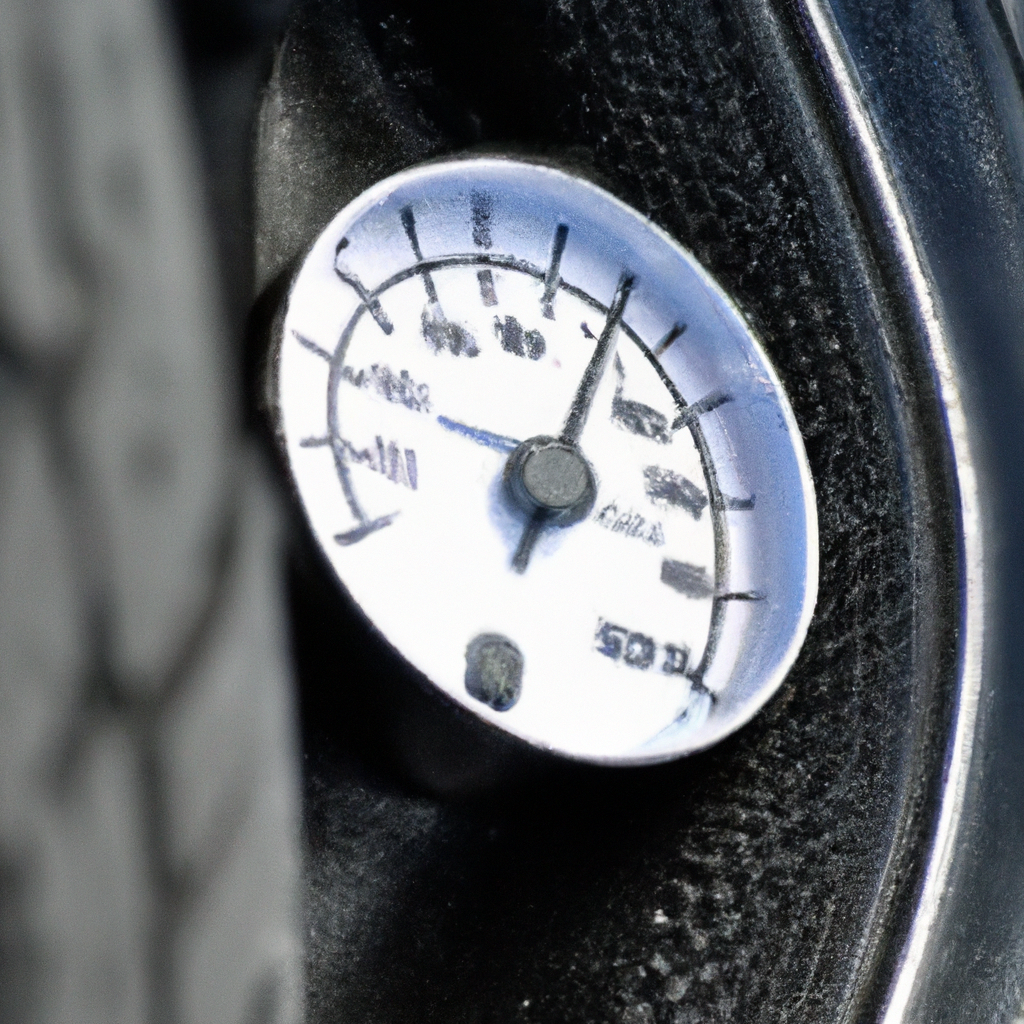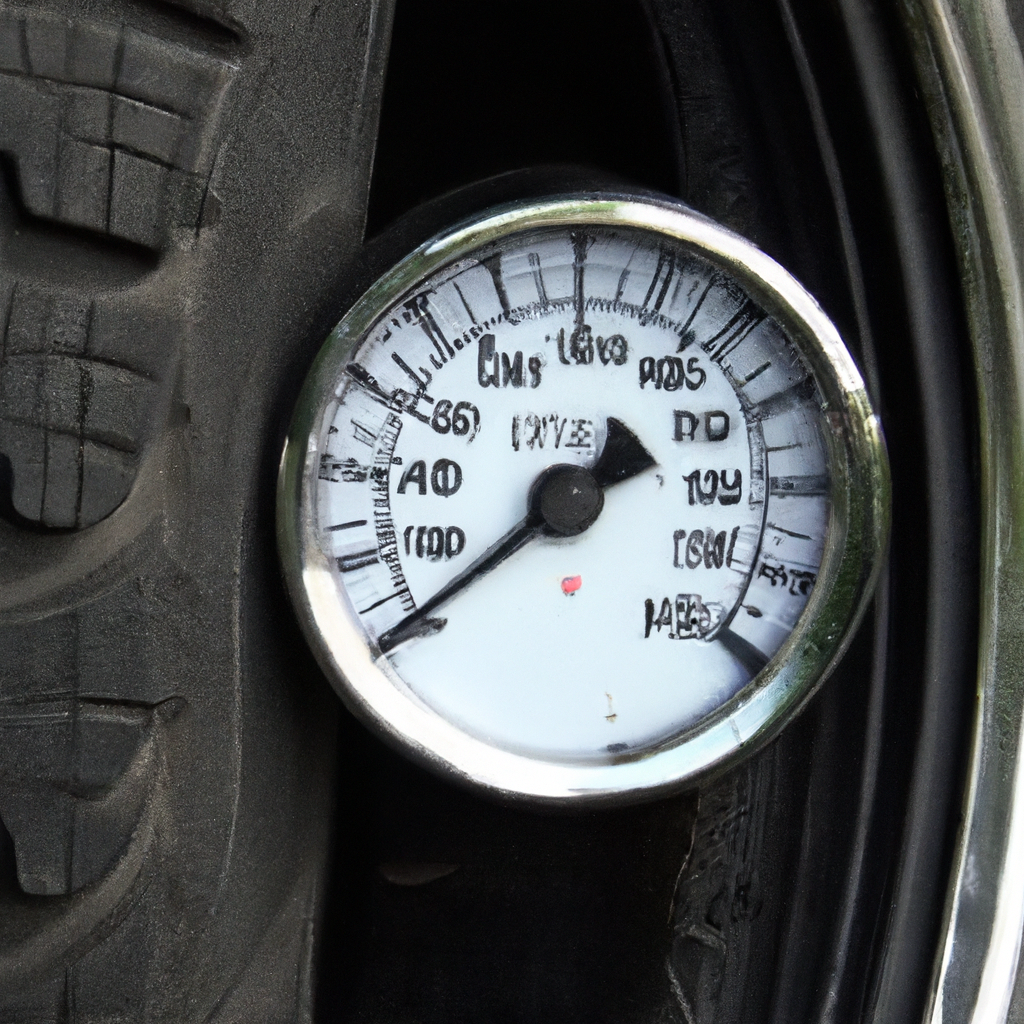Are you wondering about the ideal tire pressure for your run-flat tires? Ensuring that your tires are properly inflated is crucial for both your safety and the performance of your vehicle. With run-flat tires becoming increasingly popular, it’s important to understand the recommended tire pressure to maximize their effectiveness. In this article, we will explore the optimal tire pressure for run-flat tires, providing you with the knowledge you need to keep your tires rolling smoothly and safely on the road.

Importance of Recommended Tire Pressure
Ensuring Safety and Stability
Maintaining the recommended tire pressure is crucial for your safety and stability on the road. Running on underinflated or overinflated tires can compromise the handling and braking performance of your vehicle, increasing the risk of accidents. By keeping your tires properly inflated, you ensure optimal traction, reducing the chances of skidding or losing control in critical situations.
Optimizing Performance and Fuel Efficiency
Proper tire pressure also plays a significant role in optimizing your vehicle’s performance and fuel efficiency. When your tires are inflated to the recommended pressure, they provide the ideal contact patch with the road surface, allowing for better handling, responsiveness, and cornering stability. Additionally, maintaining the correct tire pressure helps to minimize rolling resistance, which in turn improves fuel efficiency and reduces carbon emissions.
Increasing Tire Lifespan
Another important benefit of following the recommended tire pressure is that it extends the lifespan of your tires. When tires are underinflated, the sidewalls flex more, resulting in excessive heat buildup and increasing the likelihood of tire blowouts. Conversely, overinflated tires may wear unevenly, reducing their lifespan. By adhering to the recommended tire pressure, you ensure even tread wear and maximize the longevity of your tires.
Determining the Recommended Tire Pressure
Manufacturer Guidelines
When it comes to determining the recommended tire pressure for your vehicle, the manufacturer’s guidelines should be your primary reference. They consider various factors, such as the weight distribution of your vehicle and the intended load capacity. You can typically find the recommended tire pressure in your vehicle’s manual or on the manufacturer’s website.
Vehicle Owner’s Manual
The vehicle owner’s manual is an invaluable resource for understanding the specific tire pressure requirements of your vehicle. It provides detailed instructions and information that are tailored to your vehicle’s make, model, and year. Consult your owner’s manual to ensure you are inflating your tires to the correct pressure.
Tire Information Placard
Many vehicles come equipped with a tire information placard, usually located on the driver’s door jamb, glove compartment, or inside the fuel filler door. This placard contains essential tire information, including the recommended tire pressure for your specific vehicle. Make sure to refer to this placard when inflating your tires.
Factors Affecting Recommended Tire Pressure
Load Capacity
The recommended tire pressure for your vehicle is influenced by its load capacity. If you regularly carry heavy loads or have additional passengers, you may need to adjust the tire pressure accordingly. Overloading can increase tire wear and compromise your vehicle’s handling. Refer to your vehicle’s manual for the specific tire pressure guidelines based on varying load capacities.
Driving Conditions
Different driving conditions may require slight adjustments to the recommended tire pressure. For example, if you frequently drive on rough or uneven roads, slightly increasing the tire pressure can help prevent damage and improve stability. On the other hand, if you primarily drive on smooth highways, maintaining the standard recommended tire pressure should suffice.
Temperature Changes
Temperature changes can affect tire pressure. As temperatures rise, the air inside the tire expands, causing an increase in pressure. Conversely, when temperatures drop, the air contracts, leading to a decrease in pressure. It is important to regularly monitor and adjust your tire pressure with changing seasons to ensure they remain within the recommended range.+
Recommended Tire Pressure Range
Standard Run-Flat Tires
For standard run-flat tires, the recommended tire pressure range is typically similar to that of regular tires. Most manufacturers recommend a pressure between 30 to 35 PSI (pounds per square inch) for passenger vehicles. However, it is crucial to refer to the manufacturer’s guidelines specific to your tire model for accurate information.
High-Performance Run-Flat Tires
High-performance run-flat tires often require higher tire pressures due to their unique design and capabilities. These tires feature reinforced sidewalls to support the vehicle even with a puncture, which can impact the recommended tire pressure. It is generally recommended to have pressures ranging from 35 to 38 PSI. However, always consult the manufacturer’s recommendations to ensure accuracy.
Winter Run-Flat Tires
Winter run-flat tires, designed to provide enhanced traction in cold and snowy conditions, require specific tire pressure considerations. Typically, manufacturers recommend slightly higher tire pressures for winter run-flat tires to compensate for the lower temperatures. Consult your tire manufacturer’s guidelines to determine the appropriate tire pressure range for your specific winter tires.

Regular Monitoring and Maintenance
Checking Tire Pressure
Regularly checking your tire pressure is essential in maintaining optimal performance, safety, and fuel efficiency. Use a reliable tire pressure gauge to measure the pressure when the tires are cold (i.e., when the vehicle has been stationary for at least three hours). Remove the valve cap, press the gauge firmly onto the valve stem, and read the pressure displayed. Compare the measured pressure to the recommended range and adjust it as necessary.
Maintenance Tips
In addition to monitoring tire pressure, it is crucial to follow other maintenance practices to ensure the longevity and performance of your tires. Regularly inspect for any signs of damage or wear, such as cracks, bulges, or uneven tread wear. Rotate your tires according to the manufacturer’s recommendations to promote even wear and extend their lifespan. Additionally, ensure proper wheel alignment and balancing, as these factors can affect tire wear and tread life.
Consequences of Incorrect Tire Pressure
Safety Risks
Running on incorrect tire pressure can have serious safety implications. Underinflated tires are more prone to overheating, leading to tire blowouts. Overinflated tires, on the other hand, reduce the tire’s contact patch with the road, compromising traction and stability, particularly in wet or slippery conditions. Accidents caused by tire-related issues can have severe consequences, emphasizing the importance of maintaining the recommended tire pressure.
Reduced Performance
Incorrect tire pressure can negatively impact your vehicle’s performance. Underinflated tires, for instance, increase rolling resistance, resulting in decreased acceleration, reduced braking efficiency, and compromised handling. Overinflated tires, on the other hand, may result in a harsh and uncomfortable ride, reducing overall driving comfort.
Accelerated Tire Wear
Improper tire pressure can accelerate tire wear, leading to the need for premature replacements. Underinflated tires cause the sidewalls to flex more, generating excessive heat and causing them to wear out faster. Overinflated tires tend to wear unevenly, reducing their lifespan. By adhering to the recommended tire pressure, you help ensure even tire wear, optimizing their longevity and saving you money in the long run.

Benefits of Proper Tire Pressure
Enhanced Safety
Maintaining the recommended tire pressure enhances your safety on the road. Properly inflated tires provide optimal traction, stability, and handling, reducing the risk of accidents caused by tire-related issues. With the right tire pressure, you can have peace of mind knowing that your tires are working at their best to keep you safe.
Improved Handling and Stability
Proper tire pressure significantly improves your vehicle’s handling and stability. It allows for better control, responsiveness, and maneuverability, especially during sudden maneuvers or emergency situations. Whether you are navigating tight corners or driving on slippery roads, properly inflated tires ensure maximum grip and minimize the chances of losing control.
Optimal Fuel Efficiency
Following the recommended tire pressure contributes to optimal fuel efficiency. Underinflated tires increase rolling resistance, forcing your vehicle’s engine to work harder, ultimately leading to increased fuel consumption. By keeping your tires properly inflated, you reduce this resistance, allowing for smoother and more efficient movement. This, in turn, helps you save money on fuel costs and reduces your carbon footprint.
Overcoming Common Misconceptions
Higher Pressure for Greater Load Capacity
One common misconception is that inflating the tires to the maximum recommended pressure will increase their load-carrying capacity. However, inflating tires beyond the recommended pressure can lead to a harsher ride, decreased handling, and accelerated tire wear. It is important to inflate the tires according to the manufacturer’s guidelines and adjust the pressure based on the load capacity recommendations, if applicable.
Inflating Tires to Maximum PSI
Inflating tires to the maximum PSI (pounds per square inch) indicated on the sidewall is another misconception. The PSI on the tire sidewall represents the maximum pressure that the tire can handle, but it does not necessarily indicate the optimal pressure for your vehicle. Always refer to the vehicle manufacturer’s recommended tire pressure for the best performance, safety, and comfort.
Neglecting Temperature Variation
Many people overlook the impact of temperature changes on tire pressure. As mentioned earlier, temperature fluctuations cause tire pressure to vary. Neglecting to adjust the tire pressure accordingly can result in underinflated or overinflated tires, affecting performance, safety, and fuel efficiency. Regularly monitor and adjust your tire pressure to account for temperature changes, particularly during extreme weather conditions.

Tire Pressure Monitoring Systems (TPMS)
Function and Purpose
Tire Pressure Monitoring Systems (TPMS) play a crucial role in ensuring proper tire pressure. TPMS uses sensors to monitor the pressure of each tire and alerts drivers if the pressure falls below or exceeds the recommended range. This feature provides convenience and peace of mind, as it eliminates the need for manual tire pressure checks and ensures that you are always aware of any deviations from the recommended pressure.
Types of TPMS
There are two types of TPMS: direct and indirect.
-
Direct TPMS uses sensors attached to the tire valve stems. These sensors directly monitor the tire pressure and provide real-time information to the vehicle’s onboard system. If a tire’s pressure drops below the recommended level, the system alerts the driver through a dashboard warning light or other visual/audio signals.
-
Indirect TPMS, on the other hand, relies on the anti-lock braking system (ABS) sensors to monitor the rotational speed of the wheels. It detects changes in wheel speed, which can indicate low tire pressure. While indirect TPMS is less accurate than direct TPMS, it can still provide valuable information about significant deviations in tire pressure.
It is important to note that TPMS should be used as an additional tool for monitoring tire pressure but should not substitute regular manual checks, especially when it comes to ensuring the correct tire pressure with changing load capacities and driving conditions.
Professional Assistance and Advice
Consulting Tire Experts
If you are uncertain about the recommended tire pressure for your specific vehicle or if you have any concerns regarding your tires, it is always beneficial to consult tire experts. Tire professionals have the knowledge and experience to guide you in choosing the right tire pressure based on your vehicle, driving habits, and specific tire model. They can provide personalized recommendations and address any questions or doubts you may have.
Using Tire Pressure Gauges
Using a reliable tire pressure gauge is crucial for accurate pressure readings. Digital or analog gauges can be easily purchased at auto parts stores or online. It is important to choose a gauge that is suitable for your needs and regularly calibrate it for optimal accuracy. By using a tire pressure gauge, you can ensure that you are maintaining the correct tire pressure, promoting safety, performance, and the longevity of your tires.
In conclusion, adhering to the recommended tire pressure is of utmost importance for your safety, vehicle performance, and tire lifespan. By following the guidelines provided by the manufacturer, regularly monitoring your tire pressure, and seeking professional advice when needed, you can ensure optimal safety, handling, and fuel efficiency. Remember, proper tire pressure is not just a recommendation – it is an essential aspect of responsible and conscientious driving.


